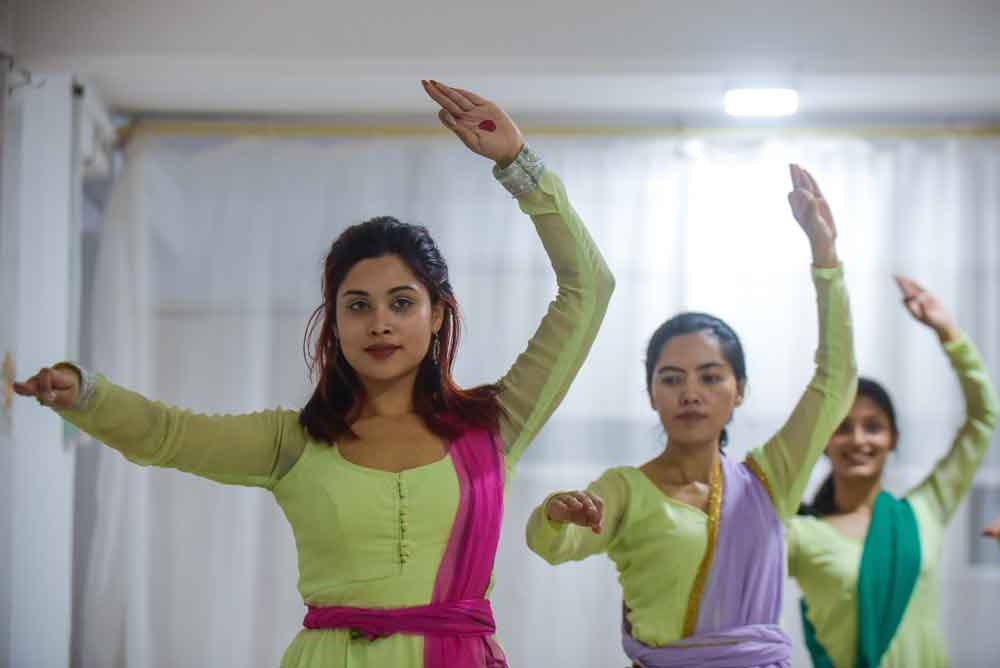Sohini Roychowdhury, noted dance exponent, describes dance as ‘a magical combination of elements that helps us become more in tune with our emotions and how we express them.’ For centuries, women have turned to classical dance not only as a mode of expression but also to build strength, resilience, and serenity through movement. Today, science affirms what dancers have always known, that these graceful movements also nurture body and soul. Classical dance sculpts the body while calming the mind. In an age of stress and overstimulation, this rhythm offers a return to balance and inner power.
Cardiovascular Fitness And Endurance
Forms like Kathak and Bharatanatyam involve fast footwork, spins (chakkars), and jumps, providing substantial aerobic exercise that improves heart health, stamina, and lung function. They increase cardiovascular health, reduce blood pressure and lipid levels, and support weight management. A 2022 study published in Taylor & Francis Online found that Kathak dancers exhibited significantly higher muscular strength, endurance, and flexibility compared to non-dancers, along with a higher waist-to-hip ratio. The study was conducted with 206 female Kathak dancers between the ages of 18 and 45.
Anthropologist Dr Monika Kulshreshtha says, ‘Kathak dancers had significantly lower rates of hypertension. More importantly, we found that Mean Arterial Pressure (MAP)—a lesser-used metric—was a clearer, more reliable tool to assess blood pressure in physically active individuals. Why does this matter? Because active bodies like those of dancers or athletes may not always fit into the conventional blood pressure boxes. MAP gives a better picture—one that should be more widely used in public health and preventive screenings. Dance, especially classical forms like Kathak, is not just an art form. It’s discipline. It’s mindfulness. It’s movement therapy… As someone who’s walked the line between science and the stage, I find this deeply affirming.’
Flexibility, Strength And Posture
The deep stances such as araimandi in Bharatanatyam and Chowka in Odissi require hip opening, knee bending, and ankle mobility. Extension of the limbs, backbends, and side stretches further enhance overall flexibility. This repeated practice increases the range of motion in major joints and promotes muscle elasticity. Arm gestures (mudras) and sustained poses in Bharatanatyam and other forms strengthen hips, glutes, quadriceps, calves, back, upper body, and core while increasing flexibility. Regular practice also trains dancers to maintain proper body alignment while in motion and stillness. Improved body awareness helps correct posture unconsciously, even when they’re not dancing.

Coordination And Motor Skills
Learning complex rhythmic patterns and sequences sharpens balance, coordination, and spatial awareness. According to a 2020 study published in the National Library of Medicine, Bharatanatyam dancers performed better in static balance and showed superior lower and upper limb muscle strength compared to non-dancers. This enhanced balance is attributed to the dynamic, weight-shifting nature of the dance form, requiring constant postural control and quick changes in body position.
Stress Relief And Emotional Expression
The meditative immersion in rhythm and movement promotes stress reduction, mental clarity, and releases endorphins. Classical dance’s expressive potential (abhinaya, mudras) allows cathartic emotional release, effectively managing feelings that might be hard to verbalise. During the pandemic, a study was published in the International Journal of Indian Psychology comparing levels of flow, psychological well-being, and emotions between classical dancers and non-performing artistes. Classical dancers experienced higher levels of flow, greater psychological well-being, and more positive emotions than controls. Non-performers showed higher negative emotions.
Cognitive Enhancement And Self-Esteem
Memorising choreography and rhythm helps to strengthen memory, focus, and creative thinking. A study published in Frontiers in Psychology (2023) found that Kathak dancers showed enhanced cognitive functioning due to dance’s demand for rhythm-movement coordination and memory. Neuroscience has shown that repetition combined with motor movement is critical for memory formation. Dance demands split-second decision-making, attention shifting, and multi-tasking, such as syncing movement with live music or improvising during performance. There is always progress through learning, whether it is mastering steps or performing, which in turn builds discipline, self-confidence, achievement, and performance presence.
Therapeutic And Psychotherapeutic Value
Indian classical dances, particularly Kathak, Kuchipudi, Odissi, and Bharatanatyam, have shown significant reductions in stress, anxiety, and depressive symptoms in empirical studies. Dance movement therapy techniques rooted in abhinaya and mudras are being integrated within psychological care, addressing conditions like anxiety, depression, and even autism.
Indian classical dance is much more than artistic expression. It’s a scientifically validated, holistic practice enhancing both physical and emotional well-being. Whether through powerful Kathak spins, the disciplined poise of Bharatanatyam, or the soothing flows of Mohiniyattam, women can access creative, cultural, and therapeutic transformation.